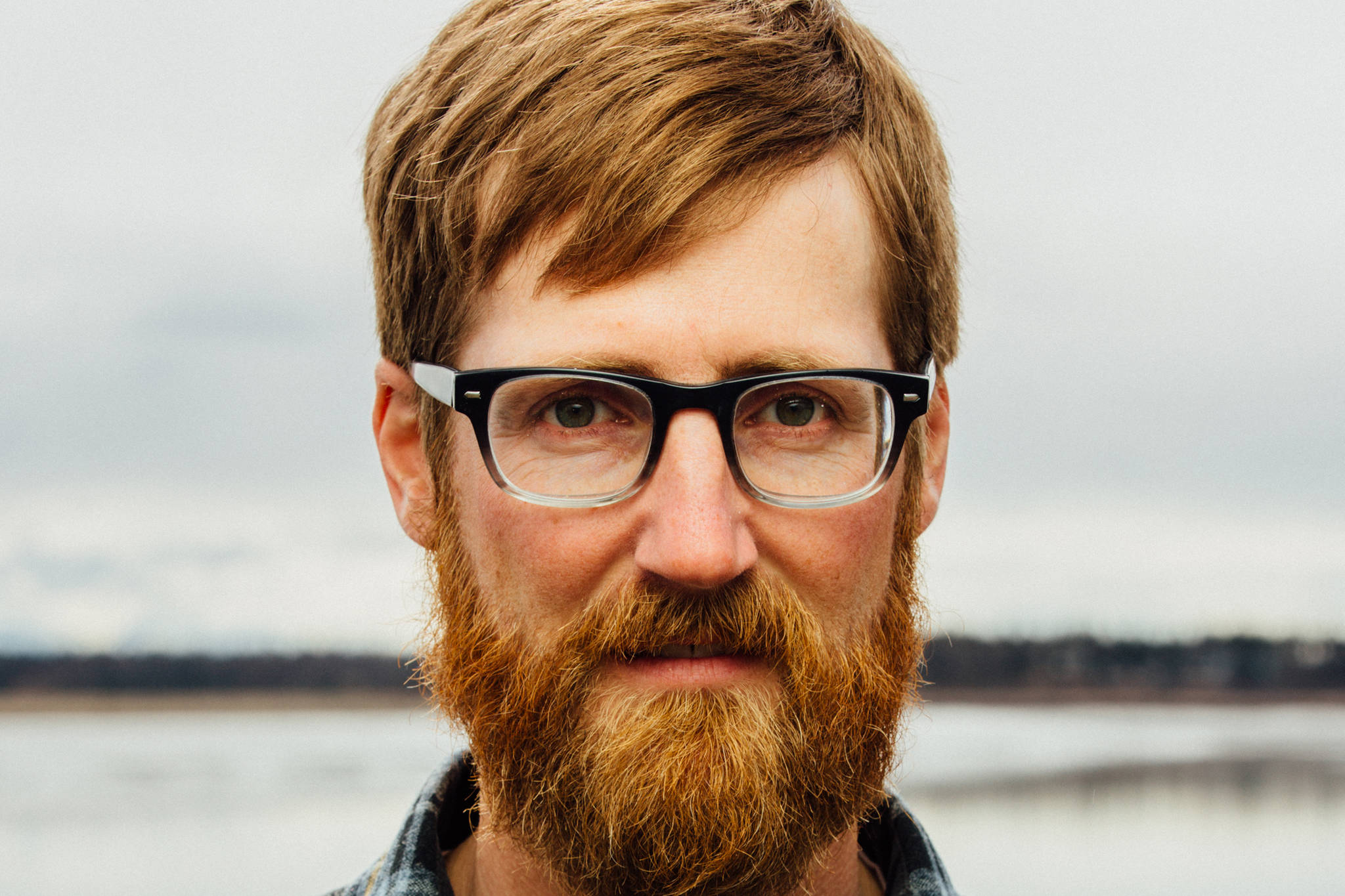Although I’ve never verified this, I like to brag that University of Alaska Southeast is the only university in the world with a wild run of coho. We also get sockeye, pinks, and chum, but the silvers capture my imagination. Like our students, coho start milling around campus in late August. The run isn’t huge; like UAS student numbers, 1,000 would mark a very good year. I’ve made a habit of taking a break from grading papers each fall, wandering down to Auke Creek to greet the fish. I used to take my fly rod, but anymore, I take comfort in simply watching. Seeing a crimson-sided buck breaking the glassy surface of the frogwater under the footbridge serves as a comforting annual reminder of the fisheries that sustain me, my students, and our region.
Although I made several trips to the creek this fall, I only saw a single fish. At first I thought I wasn’t checking enough, but as they removed the weir last week, my biologist colleagues confirmed my suspicions: coho counts were at all-time lows. Sockeye, pink, and chum numbers were also alarming. We can only speculate as to the causes, but like a lot of the small streams in Southeast Alaska, these runs are fragile, requiring constant vigilance from stewards like us.
As Alaskans, we know this; salmon are a defining characteristic of our state’s cultures. From Alaska Native peoples who have thrived here for millenia to just-arrived migrant cannery workers, salmon sustain people here. For the most part, humans have sustained Alaska salmon, too. Despite the well-rehearsed story of Alaska’s exceptional management, however, problems lurk in the salmon-people system. Most notably, salmon are central to discussions about the delicate balancing act between sustainability and the state’s need to create revenue through development.
I often ask my students to contemplate these problems. In my “Salmon, Sport, and Society” class, for example, students think critically about ways to create a more sustainable, equitable, and resilient salmon-people system in Alaska. When I taught this class last spring, we were just beginning to track an emergent issue in which the university would be the driver of development impacting salmon habitat: the UA Timber Sale in Haines. We didn’t have time to track it fully, so I spent the summer getting up to speed. I encourage you to do some research and draw your own conclusions. Here’s what I’ve learned:
The university is negotiating the sale of 13,400 acres of timber to be harvested over 10 years. The parcels under consideration are on the banks of Kleheni and Chilkat Rivers upstream of Haines and Klukwan, critical spawning habitat for imperiled Chinook, and culturally-significant lands. Some parcels overlap with the Chilkat Bald Eagle Preserve. The extent of the risk the logging presents to fish is unclear, however, as there are no details about specific parcels, type of logging, or interested parties.
As with all stories, there’s more to it, but perhaps you are wondering: Why is the university negotiating a timber sale in the first place? As a Land Grant institution, (a shockingly small) part of our funding structure is linked to university-owned lands that an Office of Lands manages. As the chair of the Humanities Department, I know too well that we need money to continue to serve our students. I’m inspired by the creative efficiencies we have found to pay for services the university provides in the midst of our fiscal crisis. I’m less inspired by the Lands Office’s interests in executing a timber sale in critical salmon habitat near communities we serve.
I’m always inspired by the creative thinking of our students. If our current leaders make choices in favor of short-term profit, potentially trading the long-term benefits of a fish-based economy that’s already the largest employer in the region in the process, the next generation will have fewer options. As the Board of Regents meet next week, I’m hopeful they will exhibit the same leadership I see emerging in my students, finding creative solutions that consider fish, local perspectives, historic and traditional uses of the land, and ultimately privileging renewable long-term investments as we manage our lands. Those coho and kids who show up bright-eyed and ready to make their mark on the world every August are depending on all of us.
• Dr. Kevin Maier is an Associate Professor of English at the University of Alaska Southeast, where he teaches a range of environmentally-focused courses. In addition to serving as an Alaskan Salmon Fellow, and as the chair of the Humanities Department, Dr. Maier is a member of the UAS Sustainability Committee. “Sustainable Alaska” is a monthly column, appearing on the first Friday of every month. It’s written by UAS Sustainability Committee members who wanted to promote sustainability. The views expressed here do not necessarily represent the views of the University of Alaska Southeast.

